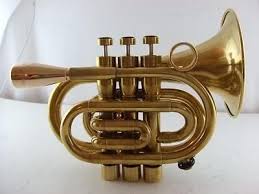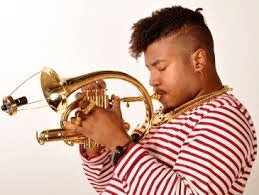Have you ever noticed that a trumpet or other horn is not straight, but is bent or has a curl? A trumpet, if it were a straight tube, would probably need to be resting on the chair in front of the player, and the same would be true for all other brass instruments. The tuba would need to be anchored from the ceiling, and even for our vocal tracts, in order to be straight, people would constantly need to look up at the ceiling.
But given that people don’t walk around looking at the ceiling (unless they were a ceiling repair person), and musical instruments tend to be neatly curled for ease of playing and transportation, it’s interesting to examine the effects of curves on acoustic tubes. This has implications for speech production as well as musical instruments.
Let’s start with hearing aid tubing. The tube typically starts at the end of the earhook or for the thin tube hearing aids, at the hearing aid receiver, and then progresses down wards and then finally takes another turn medially towards the ear. In the “olden days” we needed to learn how to bend our own hearing aid tubes so that they would look good and be comfortable for the hearing aid user- this was required whenever we needed to change the hearing aid tubing in the clinic. The “trick” was to use a match and gently heat the tubing thereby allowing it to be bent. Sometimes we were over-zealous and bent the tubing so much that there was a crimp in the bend that limited the sound flow through the tube.
In the olden days, one could measure the output of the hearing aid with straight tubing and again with our bent tubing, and to the limits of the bandwidth of the hearing aids, there was no difference. Of course, back then hearing aids only extended up to about 4000 Hz.
With modern hearing aid technology and hearing aid receiver improvements, hearing aids extend further up in frequency and depending on the coupling method, significant amplification could be achieved at 6000 Hz and above. If we were to do the same experiment (straight tube vs. bent tubing), there would be slight high frequency differences noted in the 6000 Hz region with the bent tubing having less output than the straight tubing.
An interesting article came out recently in the Journal of the Acoustical Society of America with the name “Influence of vocal tract geometry simplifications on the numerical simulation of vowel sounds” 140(3), Sept. 2016 (pp. 1707-1718).
Although this name sounds intimidating, it merely examines the effects of straightening a tube or not, and whether the tube cross section remains constant or not.
The bottom line is that there are no significant differences calculated that are below 5000 Hz. Above 5000 Hz, curves in the tube and/or narrowings tend to decrease the output slightly. This would probably apply to hearing aid tubing that is bent as well. While this was not an issue in the olden days of hearing aids and tubing, it may be an issue with some of the newer wide bandwidth behind the ear hearing aids that use tubing to direct the sound to the listener’s ear. It also should be an issue when using insert earphones that requires a foot of tubing to connect to the person’s ear.
If the trumpet was unwound (and perhaps propped up on the chair in front of the brass section), there would be slightly higher level outputs for the sounds above the top of the piano keyboard and the sound would be slightly brighter; the same could be said of a choir singing while staring at the ceiling. But given the aesthetics and the horrendous ergonomics of such a situation, I don’t mind losing a couple of decibels here and there.









